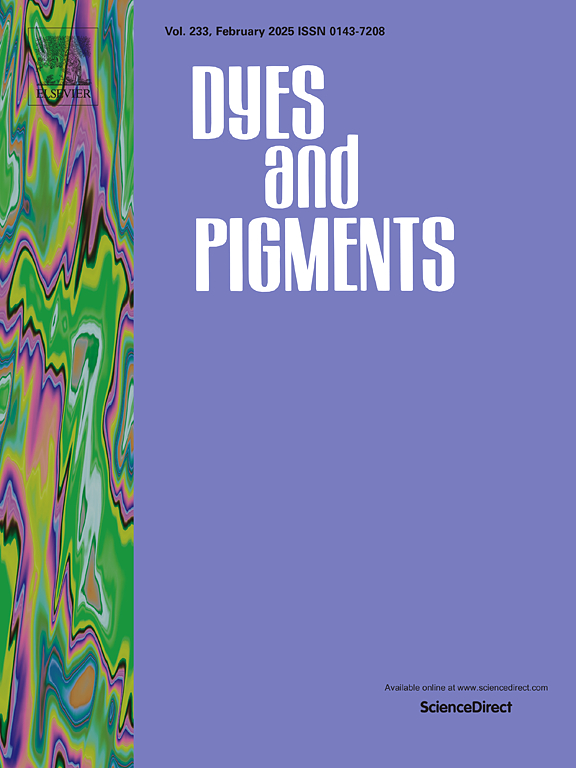Visible-light-induced polymerization initiated by D-A dyes: towards rational design of efficient light-harvesting photoinitiators by regulation of excited states
IF 4.1
3区 工程技术
Q2 CHEMISTRY, APPLIED
引用次数: 0
Abstract
The elongation of π-conjugation could efficiently enhance the photophysical performances or photochemical reactivties of organic molecules, which adapts to the requests of both designing fluorescent materials and organic photoinitiators (PIs). However, there is no work attempted to design organic PIs with large molar extinction coefficients and long π-conjugation lengths by using hybridized local and charge-transfer (HLCT) method, which is meaningful to obtain high-performance PIs with significant fluorescence/photoluminence properties. What's more, how to overcome the obstacles derived from the unbalance between high triplet concentrations and photoinitiation abilities of organic PIs seems to be crucial, while PI's design from a view of excited state were rarely reported for rational regulation strategy up to now, we thus introduced four chromophores with D-A structures designed by HLCT method, whose triplet states were confirmed by Ultra-fast absorption spectroscopy, into photopolymerzation, where LEDs in various wavelengths were utilized as the light sources in the present work. Noticeably, some of these dyes could furnish high monomer conversions and rapid photopolymerization rates, not only under the irradiation of 405 nm LED, but also long-wavelength light source at 660 nm, which have been confirmed by the photopolymerization kinetics and 3D printing technique. Here, the spin-orbit coupling (SOC) coefficients were carried out as well, to examine their effects on photoinitiation abilities of investigated molecules, which can be regarded as the first attempt to achieving light-harvesting PIs from excited state design. Finally, the corresponding photochemical mechanisms were investigated by steady state photolysis, fluorescence quenching experiments, particularly by frontier orbit energy and distributions to examine the interactions between these dyes with co-initiator/additives in details.

D-A染料引发的可见光聚合:通过调节激发态来合理设计高效的光引发剂
π共轭的伸长可以有效地提高有机分子的光物理性能或光化学反应活性,适应了设计荧光材料和有机光引发剂的要求。然而,目前还没有采用局部杂化和电荷转移(HLCT)方法设计大摩尔消光系数和长π共轭长度的有机pi的工作,这对获得具有显著荧光/光致发光性能的高性能pi具有重要意义。此外,如何克服高三重态浓度和光引发能力之间的不平衡所带来的障碍似乎是至关重要的,而迄今为止从激发态角度设计PI以进行合理调控策略的报道很少,因此,我们将采用HLCT方法设计的四种具有D-A结构的发色团引入光聚合,这些发色团的三重态通过超快速吸收光谱得到证实。其中,在本工作中使用了各种波长的led作为光源。值得注意的是,这些染料不仅在405 nm LED的照射下,而且在660 nm的长波长光源下,都可以提供高的单体转化率和快速的光聚合速率,这已经通过光聚合动力学和3D打印技术得到了证实。本文还研究了自旋轨道耦合系数(SOC)对所研究分子光引发能力的影响,这可以被视为从激发态设计中实现光收集pi的第一次尝试。最后,通过稳态光解、荧光猝灭实验,特别是前沿轨道能量和分布研究了染料与共引发剂/添加剂之间的相互作用机理。
本文章由计算机程序翻译,如有差异,请以英文原文为准。
求助全文
约1分钟内获得全文
求助全文
来源期刊

Dyes and Pigments
工程技术-材料科学:纺织
CiteScore
8.20
自引率
13.30%
发文量
933
审稿时长
33 days
期刊介绍:
Dyes and Pigments covers the scientific and technical aspects of the chemistry and physics of dyes, pigments and their intermediates. Emphasis is placed on the properties of the colouring matters themselves rather than on their applications or the system in which they may be applied.
Thus the journal accepts research and review papers on the synthesis of dyes, pigments and intermediates, their physical or chemical properties, e.g. spectroscopic, surface, solution or solid state characteristics, the physical aspects of their preparation, e.g. precipitation, nucleation and growth, crystal formation, liquid crystalline characteristics, their photochemical, ecological or biological properties and the relationship between colour and chemical constitution. However, papers are considered which deal with the more fundamental aspects of colourant application and of the interactions of colourants with substrates or media.
The journal will interest a wide variety of workers in a range of disciplines whose work involves dyes, pigments and their intermediates, and provides a platform for investigators with common interests but diverse fields of activity such as cosmetics, reprographics, dye and pigment synthesis, medical research, polymers, etc.
 求助内容:
求助内容: 应助结果提醒方式:
应助结果提醒方式:


